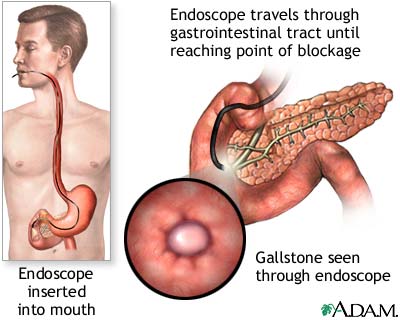
Digestive Disease Week meeting, Chicago, may 7-10, 2011
Crohn’s drug penetrates placenta Pregnant women taking a drug prescribed for Crohn’s disease may pass the medication on to a newborn through the placenta, a U.S. team of researchers from California and Georgia reported may 7. The drug, adalimumab (Humira), binds to and neutralizes an inflammatory immune protein called TNF-alpha, short for tumor-necrosis factor alpha. The drug turned up during the first three months of life in the blood of three of five children born to women taking it and in umbilical cord blood from all five newborns. The study authors say the findings don’t warrant stopping the drug during pregnancy, since it limits miscarriages and preterm births. But since adalimumab suppresses immunity, newborns exposed to it should be monitored for infections and not receive live-virus vaccines for the first six months. —Nathan Seppa
High fructose linked to pregnancy gallstones a diet high in carbohydrates, particularly fructose, may increase a woman’s risk of developing gallstones during pregnancy, researchers at the University of Washington in Seattle reported may 8. Ultrasound examination of more than 3,000 women during pregnancy showed that 10 percent had developed gallstones or biliary sludge, a particulate material in bile that has been linked to gallstone formation. Questionnaires revealed that women with diets highest in carbohydrates were roughly twice as likely to have gallstones or biliary sludge as were those consuming the lowest amounts, with fructose accounting for a greater risk than starch. The researchers adjusted for differences in weight, diabetes status and other dietary intake. —Nathan Seppa
Diabetes patients not getting hepatitis shots People with chronic liver disease or type 2 diabetes have poor rates of vaccination against hepatitis a and B, even though they are at risk of developing very severe disease from these viral infections. Researchers at Inova Fairfax Hospital in Falls Church, Va., analyzed data on several thousand people with either diabetes or liver disease. among the diabetes patients, vaccination rates were only 16 and 22 percent against hepatitis a and B in data from 2005 to 2008. Vaccination rates in people with chronic liver disease reached 32 percent for hepatitis B but only 20 percent against hepatitis a. The percentages are similar to those seen in the general population. most chronic liver disease is due to fatty liver disease not related to alcohol. —Nathan Seppa
Very early obesity therapy works Obese children as young as age 2 benefit from therapy to reduce weight and improve fitness, researchers at Indiana University School of Medicine in Indianapolis reported may 8. The scientists recruited 462 obese children ages 2 to 21, including 44 who were age 2 to 5. All the children and family members received intensive therapy on behavioral techniques such as goal-setting, self-monitoring, positive reinforcement and stimulus control. Children at all ages showed weight loss and better fitness, but the youngest children exceeded the older kids. both groups showed metabolic improvements. Current guidelines suggest such therapy for kids age 6 to 18. The researchers suggest starting at age 2. —Nathan Seppa
Endurance athletes face GI problems College athletes engaged in swimming, crew and lacrosse have more gastrointestinal problems than do athletes playing less grueling sports, researchers at Drexel University in Philadelphia have found. The scientists obtained questionnaire data on health and lifestyle from 107 Division I college athletes and 108 non-athletes. The non-athletes were more prone to irritable bowel syndrome; otherwise there was no difference between the groups in digestive function. But 52 percent of athletes participating in one of the three high-intensity sports reported at least one gastrointestinal disorder, compared with 34 percent of college athletes in lower-intensity sports. Athletes in tennis and diving were among those with the fewest symptoms, the researchers found. —Nathan Seppa
- |
- Comment
- |
- Tweet
- |
Found in: Body & Brain